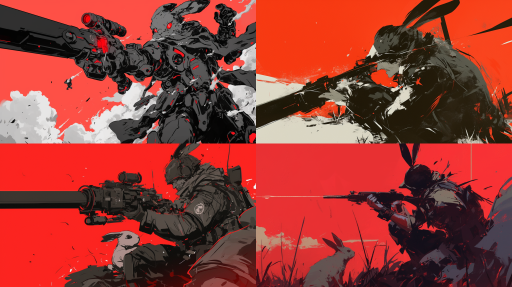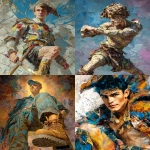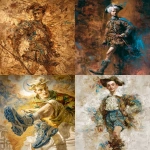Explore the Best AI Image Gallery

AI-Driven Visual Experiences: Shaping Creative Frontiers
As artificial intelligence continues to evolve, its impact on the creative industry is becoming increasingly profound. AI-driven visual experiences are not just enhancing creativity; they are transforming the way artists, designers, and creators conceptualize and produce visual content. In this exploration, we will delve into the innovative applications of AI in visual creation, its ethical implications, and emerging trends that promise to further reshape the landscape of creativity.
The Impact of AI on Creative Processes
Historically, creativity has been seen as a uniquely human trait, yet AI is challenging this notion. Tools like DALL-E 2 or Midjourney enable users to generate stunning images and art pieces within seconds. These platforms use machine learning algorithms trained on vast datasets to create visuals based on textual input. As a result, creators can explore a plethora of ideas quickly, allowing them to focus more on conceptualization rather than execution.
AI doesn't replace the artist but rather acts as a collaborator. Famous photographers and designers are beginning to incorporate AI into their workflows—not only to enhance their existing work but also to unlock entirely new forms of artistic expression. For instance, generative art and style transfer techniques allow artists to blend traditional art with modern aesthetics, creating unique hybrid styles.
Potential Uses Across Various Domains
AI-driven visual experiences have applications across multiple domains:
- Advertising: Marketers use AI for targeted ad creation, developing personalized visuals tailored to audience preferences.
- Film and Animation: AI assists in storyboarding, character creation, and even scriptwriting, streamlining the production process.
- Healthcare: Medical imaging can be enhanced through AI, allowing for better diagnosis and treatment planning.
- Gaming: AI-generated assets can create immersive environments and characters, enriching player experiences.
These domains highlight not only the versatility of AI but also its ability to simplify and enrich the creative process.
Ethical Considerations in AI Artistry
While the integration of AI in visual experiences offers remarkable advantages, it also raises ethical questions. One key concern is the authorship of AI-generated works. With machines producing art, the question arises: who gets credit? Should it be the programmer, the user, or the AI itself?
Additionally, the potential for bias in AI algorithms is a significant concern. If the datasets used to train AI are biased, the resulting outputs can perpetuate stereotypes or exclude marginalized voices. Thus, ensuring that diverse and representative data is used becomes paramount for fair representation in AI art.
Moreover, as AI continues to mature, the line between human and machine-created art may blur, leading to broader questions about the nature of creativity itself. Is art created by AI less valuable, or does it offer new perspectives on the human experience?
Future Trends in AI-Driven Visual Experiences
The future of AI in the creative sector appears vibrant and filled with potential. One emerging trend is the rise of collaborative AI, where artists work collaboratively with AI systems in real-time. This integration allows for spontaneous creativity, enabling artists to push their boundaries and explore uncharted territories.
Another significant trend is the proliferation of immersive technologies like augmented reality (AR) and virtual reality (VR). AI can enhance these experiences by making them more interactive and responsive to user input. For instance, imagine a virtual gallery where visitors interact with AI-generated art that changes based on their emotions or preferences.
As AI continues to refine its capabilities, we are likely to witness an increase in customized visual content. From tailored advertisements to personalized artworks, the future will lean towards user-centric experiences driven by data and AI analytics.
Conclusion
AI-driven visual experiences are reshaping the creative industry by enhancing artistic capabilities and opening up new horizons for innovation. However, as we embrace these technologies, it is crucial to address the ethical implications involved. Balancing creativity with accountability will ensure that the integration of AI in artistry leads to a vibrant, inclusive, and diverse creative landscape.






](https://images.ai-img.art/thumbnails/150/1614d64dd7156c95db952258978be809eb3db8cea4453fec69c49cbdfe63fa94.webp)


](https://images.ai-img.art/thumbnails/150/3a60737a5b67fa252207ad1ae6db245a26284f53fb5846996bb34515b39ff269.webp)
](https://images.ai-img.art/thumbnails/150/8c3bd422d50d35735d8fb33bd314a79e30e5b150129d5d09bdad822a2007593f.webp)

